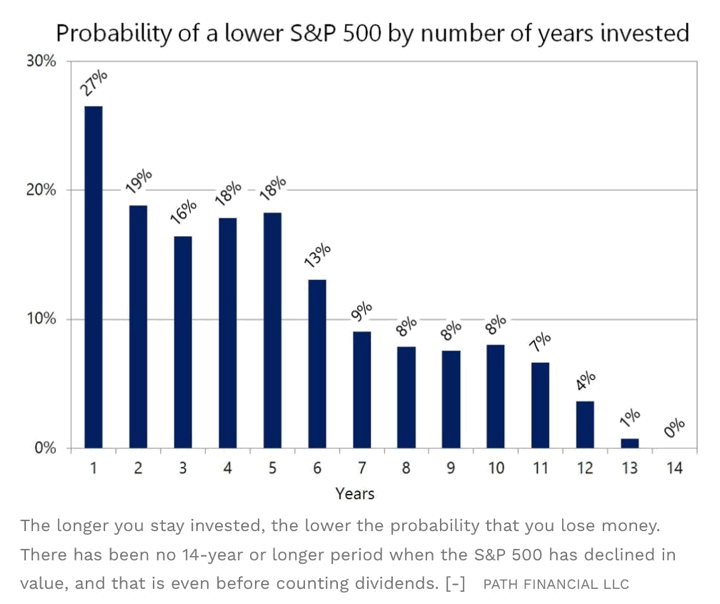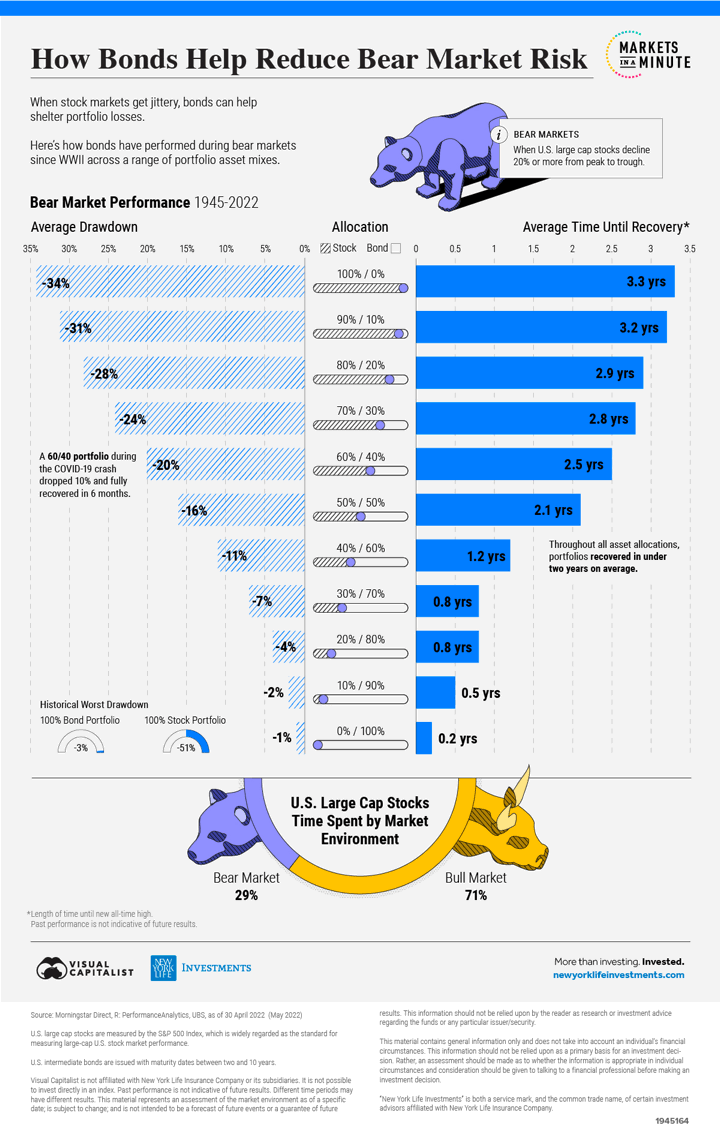How long will this bear market last? What is the longest that the S&P 500 index number we always see on TV (which doesn’t include dividends) stayed below its initial value? Here is an interesting chart “Probability of a lower S&P 500 by number of years invested” via @GRDecter:

The text below the chart is a bit small, but it reads:
The longer you stay invested, the lower the probability that you lose money. There has been no 14-year or longer period when the S&P 500 has declined in value, and that is even before counting dividends.
While that suggests this chart supports the idea of owning stocks long-term, it is also an important education for managing expectations; This information might actually make stock ownership worse than you initially thought. If you asked the average stock investor how long before their stocks recover from a bear market, I’d guess the average answer would be 1-3 years. This can be supported in graphics like this from Visual Capitalist. See the “Average time to recovery” for 100% stocks (click to see full image at source).
This is the difference between average (3 years to recovery) and historical worst-case scenario (10+ years), not to mention the future could be even worse. It’s tough to design a portfolio around both these parameters. Do you have enough faith in your investing plan to withstand a 10+ year period of just S&P 500 dividends and no capital appreciation?

 The Best Credit Card Bonus Offers – 2025
The Best Credit Card Bonus Offers – 2025 Big List of Free Stocks from Brokerage Apps
Big List of Free Stocks from Brokerage Apps Best Interest Rates on Cash - 2025
Best Interest Rates on Cash - 2025 Free Credit Scores x 3 + Free Credit Monitoring
Free Credit Scores x 3 + Free Credit Monitoring Best No Fee 0% APR Balance Transfer Offers
Best No Fee 0% APR Balance Transfer Offers Little-Known Cellular Data Plans That Can Save Big Money
Little-Known Cellular Data Plans That Can Save Big Money How To Haggle Your Cable or Direct TV Bill
How To Haggle Your Cable or Direct TV Bill Big List of Free Consumer Data Reports (Credit, Rent, Work)
Big List of Free Consumer Data Reports (Credit, Rent, Work)
very interesting charts.
In my observation, you are less likely to lose money with established companies like the ones in Dow Jones index. Some of the adventurous stock bets can potentially even go to zero. Of course, people buy them hoping it will be the next big thing. Well established companies may have patchy periods or go down with the market but they always prove their worth and recover fast. If you are worried about the market, you may need to opt for boring and especially avoid companies with no proven profit history. Knowing that they turn profit year in year out is your insurance in a way.